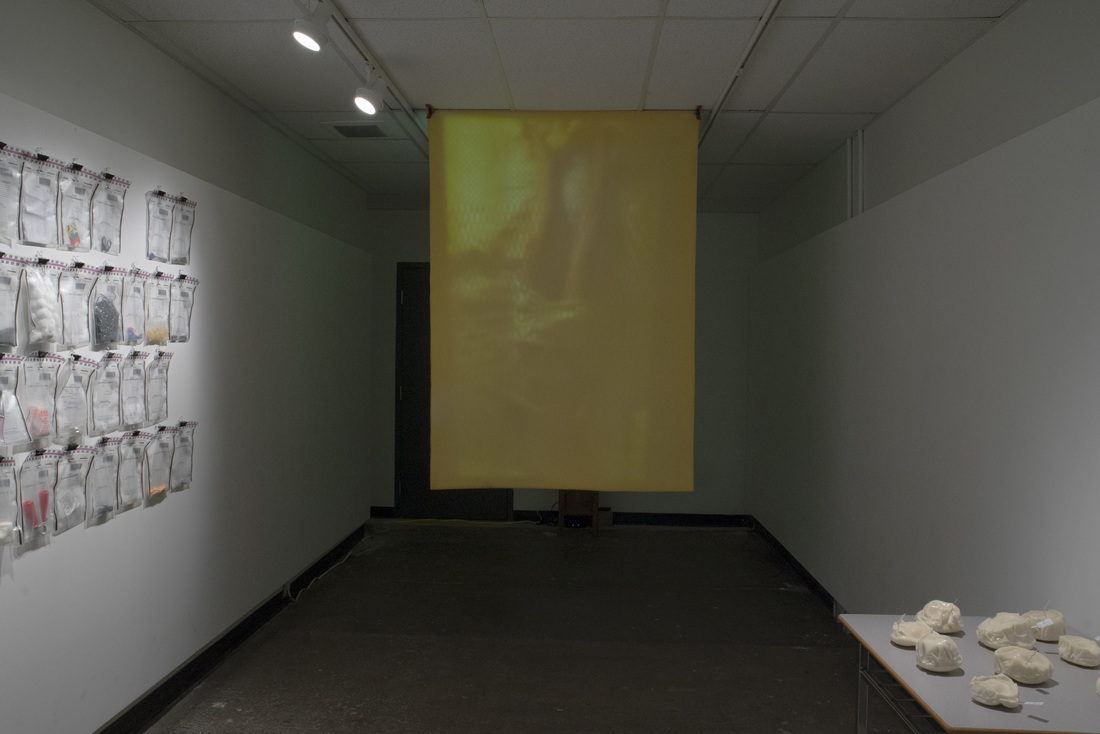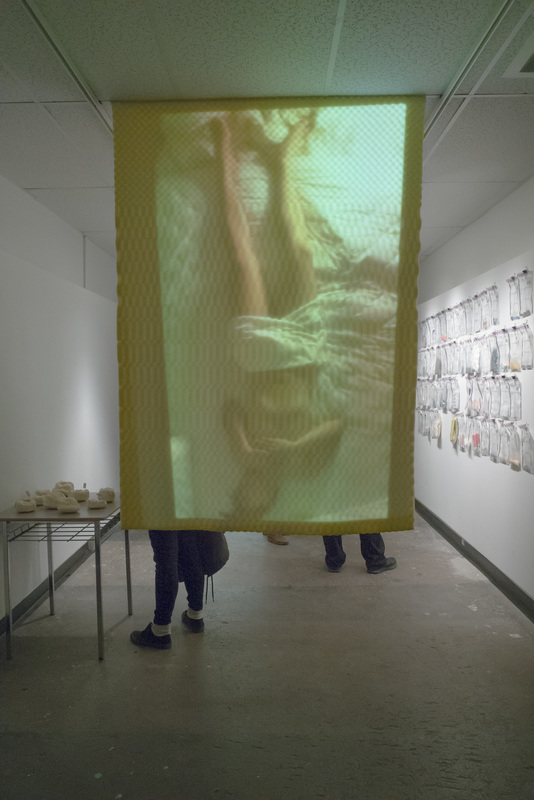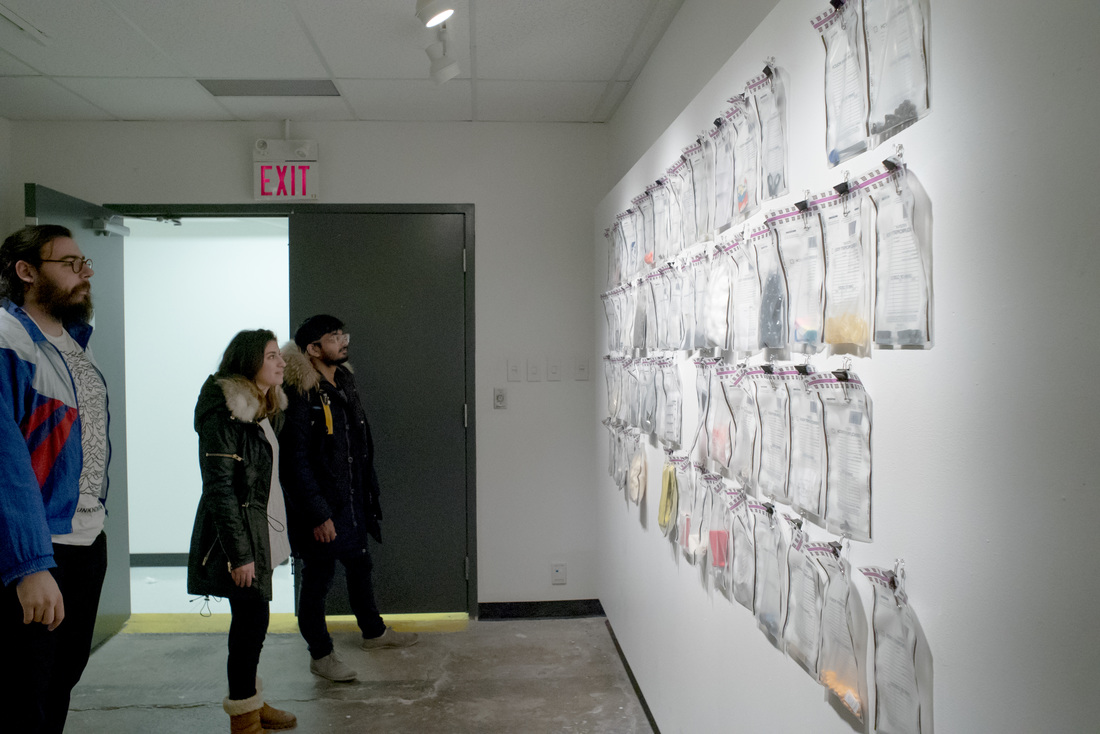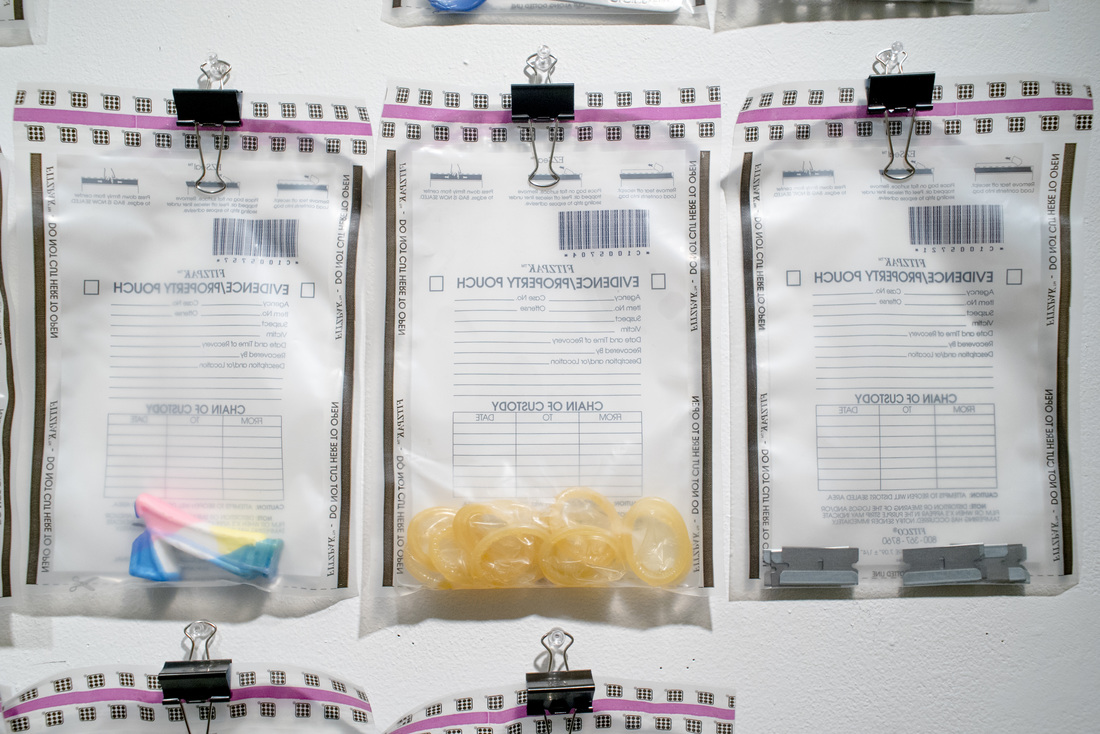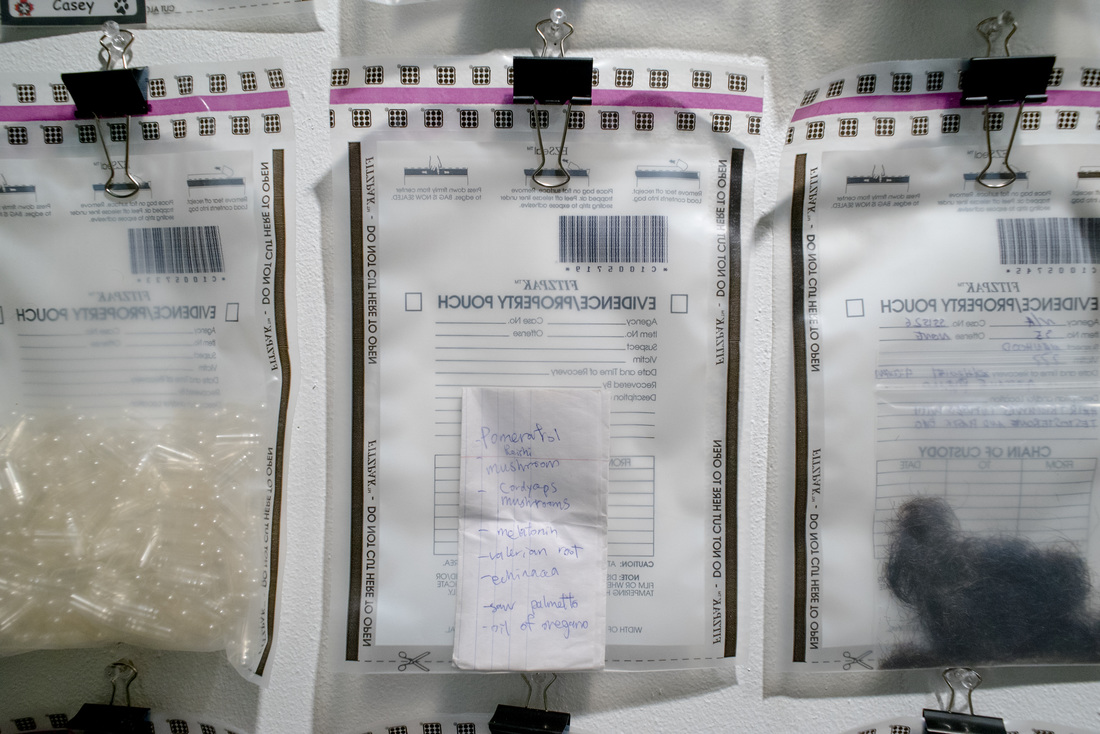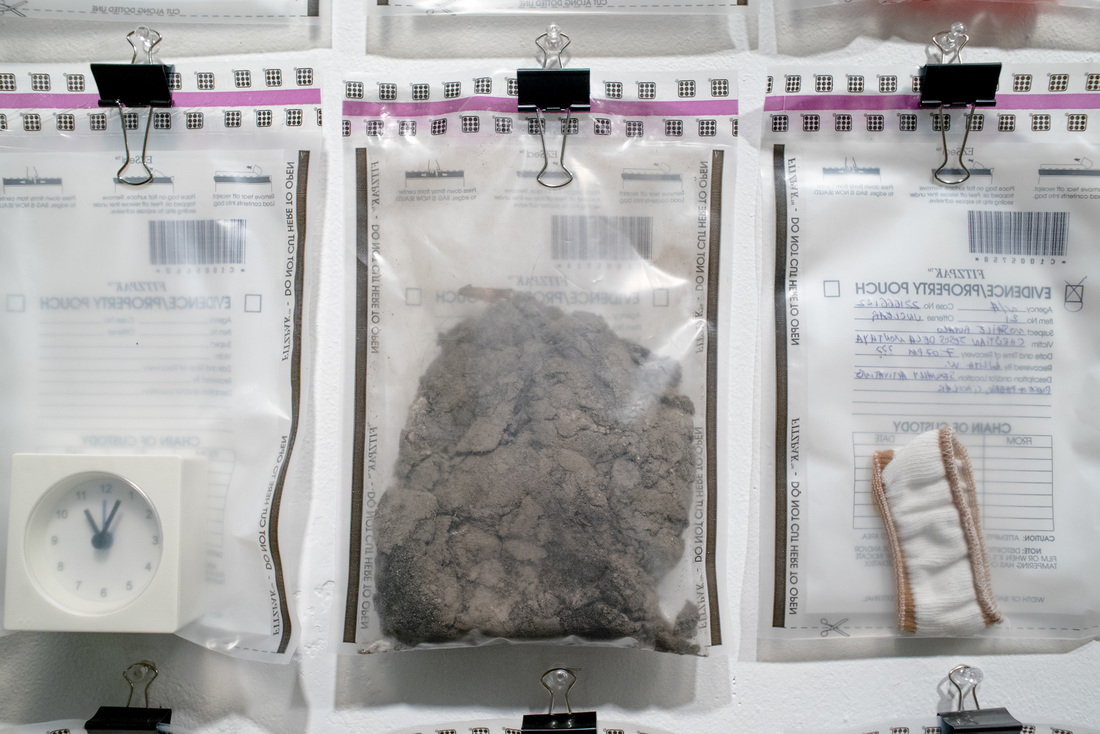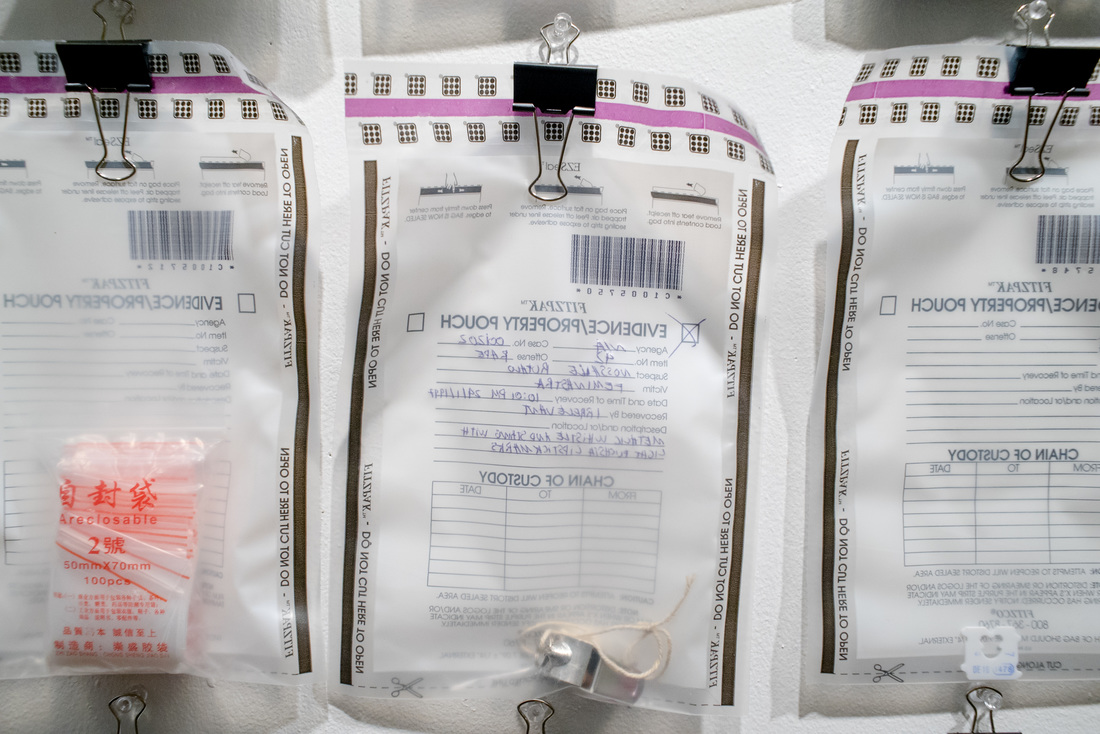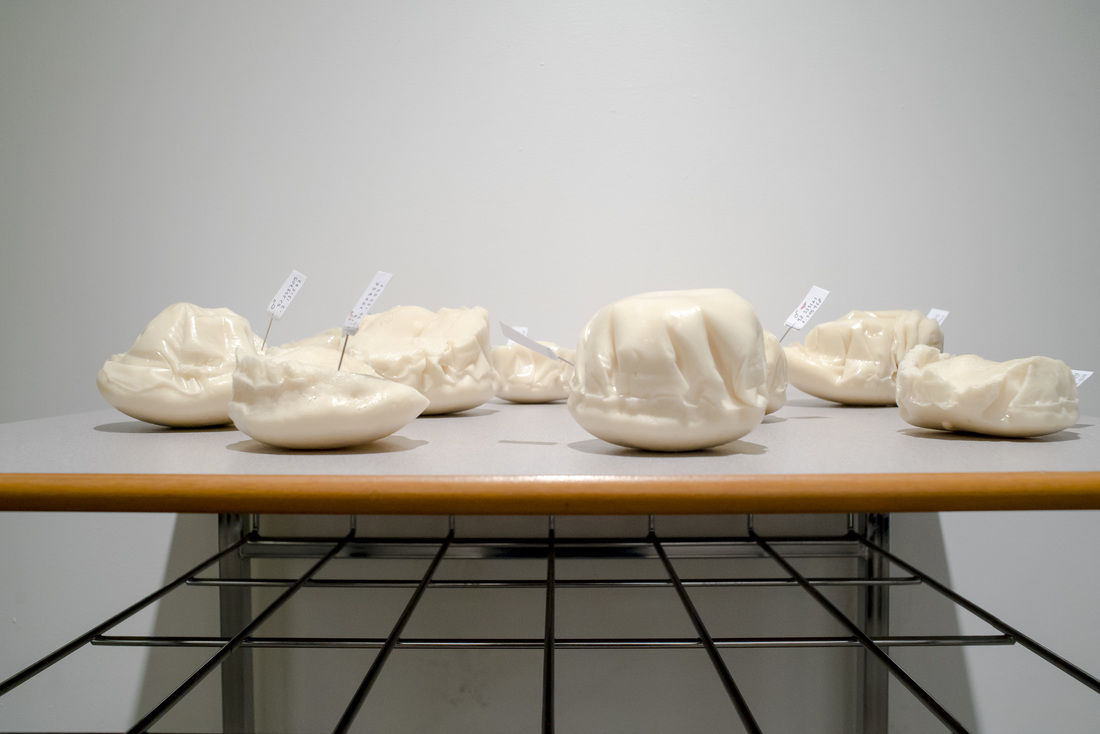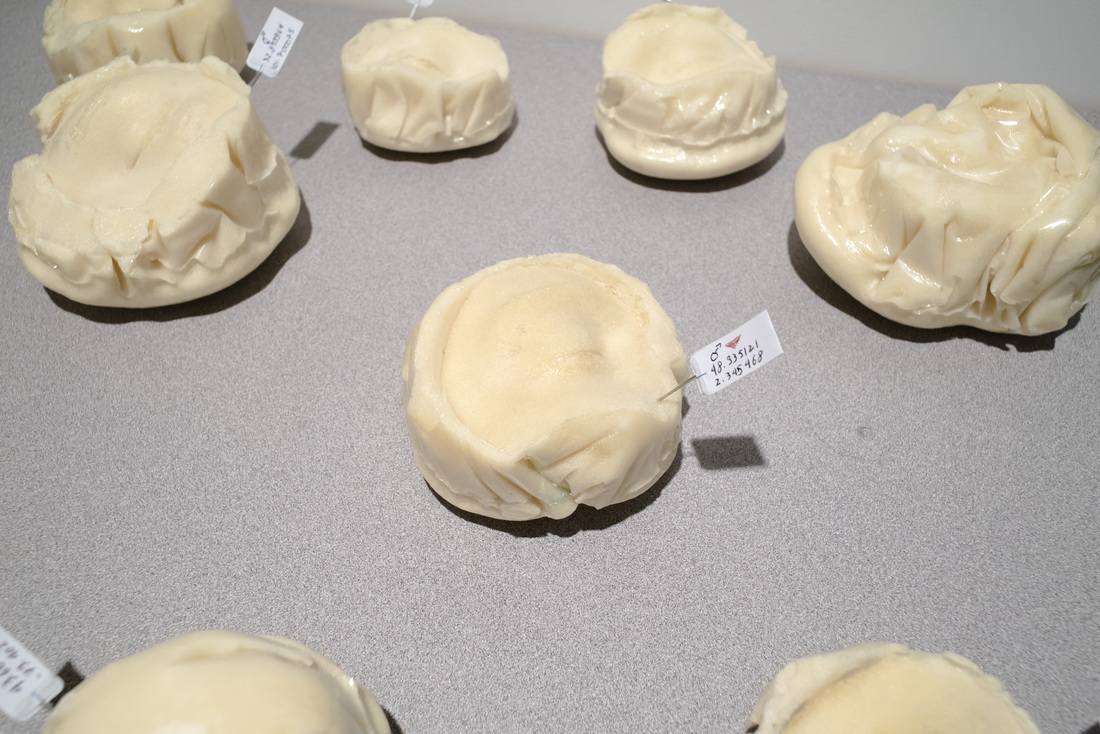There's More to Life Than What
You Know But Not Much More
There's More to Life Than What You Know But Not Much More
Three part Installation (2015):
On Wall: "The Evidence Wall" Mixed-media, Various Objects, Evidence Bags, Bulldog Clips.122x100 inches.
On Table: "Ocular Shells" Mixed-media, Foam Castings, Pins, Location Tags. 29x20 inches.
On Ceiling: "Aether Martyr" Mixed-media, Clamps, Foam Mattress, Looping Projection. 72x50 inches
Artist Statement:
This collection of works speaks of thresholds on multiple levels. Objects and imagery are present in a silent suspension filled with detail. The materials present in this space are evidence; they function as such and legitimize the human need for completing stories, creating narratives and closing circles. It satisfies the human need to hold on to physical objects that are the support of unreliable human memory. Memories always have the possibility to be reconstructed and reframed; they are malleable and easily influenced by present emotions. These archived objects recontextualized and decontextualized bring attention to deception and unreliability with inconsistencies and inaccuracies that enrich this negation of conclusiveness like memory.
Materials speak for themselves in this space and remain open to the creation of multiple narratives likely filled with a sense of dread. They are evidence on the wall for something that has been lost or taken, clearly meaningful by the context in which they are presented but equally deceiving and possibly futile. These objects are proof of life, but by gathering them in this sterile space they imply a break in narrative progression, they are not where they should be, they appear documented, or in the process of being documented. This disruption opens a path towards reconstruction.
Although the pieces are static they refuse to release a sense of closure. The evidence present in this space is by definition absent in another space, potentially where it should be or where it was found. This duality of absence and presence is mirrored by the way the human body is present in the space, static, floating, reminiscent of a state of hibernation and neither dead or alive.
The immobility of the human body is linked with the presence of the criminal evidence. The projection of a full body present in a space that functions as a non-space is almost negated by the mattress supporting it. Even its religious undertones are brought back down to a frozen state of comfortable hibernation that effectively makes any sort of transcendence impossible. It remains static like a cocoon in metamorphosis.
The disembodied closed eyes are similarly placed in a motionless plane that appears to be in process. They act as doors in and of themselves for different dualities such as the internal and external or the immobile stage of sleep and the immobile permanence of death. Each eye is marked with a geo-location tag that punctuates a real place on earth where someone was lost or ceased to be. These markers are indicators of the presence of an absence and further the discussion of this duality.
Together, these works actively contest the division between the realm of memory and the realm of experience and physicality. My reflection is centered on the magnetic subject of physical presence and memory associated to absence.
In the words of Jacques Derrida:
“Upon the death of the other we are given to memory, and thus to interiorization, since the other, outside us, is now nothing. And with the dark light of this nothing we learn that the other resists the closure of our interiorizing memory… death constitutes and makes manifest the limits of a me or an us who are obliged to harbor something that is greater and other than them; something outside of them within them.”
